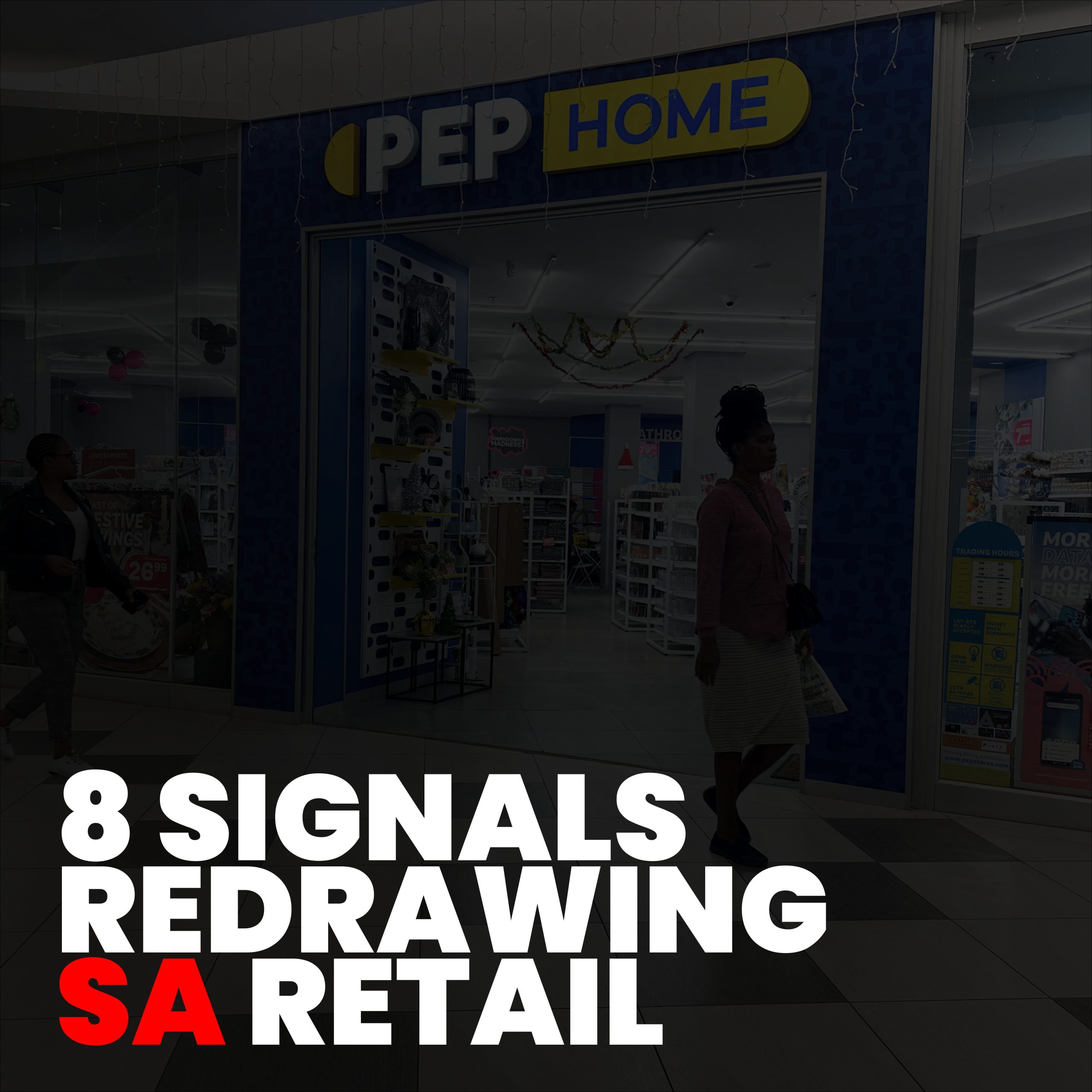Introduction
The Pepkor acquisition of selected Retailability brands has reset South Africa’s value-retail conversation. Priced at roughly R1.7 billion (about US $98 million), the deal folds 469 stores into Pepkor’s network and strengthens adult-wear and home-ware alongside its family apparel core. With approvals in place, attention turns to integration: aligning sourcing, logistics, and brand stewardship while protecting the banners customers already trust. Below are eight ultimate signals to watch—spanning store footprint, category mix, supply-chain synergies, pricing discipline, and consumer experience—that explain how this transaction can turn headline scale into everyday value at the till.
Pepkor acquisition: What the deal includes and why timing matters
The Pepkor acquisition bundles adult-focused fashion chains and a home-ware banner that fit Pepkor’s value DNA. Closing ahead of peak shopping windows allows inventory, floor-sets, and marketing calendars to align before seasonal demand spikes. The assets arrive with existing staff, footfall, and recognizable brands, so Pepkor’s early priority is trading continuity while systems are standardized in the background. That sequencing reduces operational risk and preserves shopper trust. Executed well, customers should notice familiar assortments delivered more reliably, not abrupt changes. Timing also unlocks early synergy capture—shared DC capacity, fuller truckloads, and smoother replenishment—when sales volumes are naturally higher.
Pepkor acquisition: Strategy, portfolio balance, and risk spread
The Pepkor acquisition is designed to rebalance Pepkor’s category mix. The group’s heritage in family and kids’ apparel now sits beside deeper adult-wear and a scaled home-ware lane, reducing reliance on a single demographic or fashion cycle. That diversification matters in a price-sensitive economy: when one category softens, another can carry the load. It also expands mission-based shopping—fashion plus household basics in one trip—lifting basket size without heavy promotions. Portfolio breadth enhances bargaining power with suppliers, concentrates buys in core fabrics and trims, and improves transport utilization. The strategic end-state is simple: more relevance per visit, steadier margin through seasons.
Pepkor acquisition: Footprint density, access, and convenience
The Pepkor acquisition adds 469 locations, densifying coverage in metros and extending reach into secondary towns where convenience dictates choice. A tighter map shortens lead times, trims last-mile costs, and supports localized assortments that reflect community demand. Operationally, clusters can share visual-merch plans, maintenance vendors, and training cycles, raising store-to-store consistency. For shoppers, benefits show up as fewer “size gaps” on rails, quicker replenishment of popular basics, and predictable pricing ladders. For Pepkor, each door compounds scale—improving buying leverage, smoothing logistics per unit, and enabling faster trials of curated formats tailored to neighbourhood footfall.
Pepkor acquisition: Adult-wear growth and fashion cadence
The Pepkor acquisition grants ready platforms to scale adult-wear at sharp price points. Expect tighter, data-led ranges focused on proven fits, essential palettes, and payday-timed refreshes. Pepkor’s sourcing muscle can lift perceived quality—better fabric handle, cleaner stitching, more consistent sizing—without losing value positioning. Marketing will likely emphasise outfit-building and expandable basics so customers refresh wardrobes affordably. The execution target is repeat purchase: if shoppers trust fit, find sizes in stock, and see small newness drops often, they return. That cadence sustains sell-through across seasons and protects margin without leaning on deep markdowns.
Pepkor acquisition: Home-ware momentum and basket economics
The Pepkor acquisition strengthens home-ware—kitchen, bedding, storage, and décor—where curated essentials can raise average basket with minimal floor space. In fashion-led stores, end-caps and power aisles convert browsing into add-on sales: a cookware set with payday outfits, a pillow refresh with kids’ basics. Home-ware often carries stable demand and healthy margin, smoothing apparel volatility. Expect tight, functional lines over sprawling assortments, with clear “good-better-best” ladders to let shoppers trade up confidently. As stores test local tastes, slow movers exit quickly, freeing working capital and making room for repeat winners customers buy every month.
Pepkor acquisition: Sourcing, logistics, and operational synergies
The Pepkor acquisition is engineered for executional gains. In sourcing, consolidated fabric orders and vendor rationalisation can lower cost per unit; in logistics, pooled containers and synchronized allocations reduce freight spikes and markdown risk. Shared planning calendars align buys, inbound windows, and floor-sets across banners. In-store playbooks—depth on core sizes, fast re-buys on winners, tight clamps on slow sellers—protect gross margin. Systems integration matters too: unified inventory visibility improves size availability and cuts dead stock. Synergies rarely arrive overnight, but a 12–18-month ramp with weekly scorecards can convert theory into measurable profit.
Pepkor acquisition: Price integrity, value cues, and loyalty hooks
The Pepkor acquisition will be judged at the shelf edge. Price integrity on hero items anchors trust; visible value stacks on basics signal affordability without noise. Expect sharper opening price points, consistent multi-buy logic, and cleaner signage. Loyalty hooks—group-wide returns, e-receipts, or simple bundle discounts—can reward cross-category baskets without diluting margin. Digital ads targeted by catchment should pull nearby shoppers with specific size-back-in-stock messages rather than broad discounts. Over time, the most effective retention tool is reliability: the size you want, when you want it, at the price you expected—week after week.
Pepkor acquisition: Brand stewardship and customer continuity
The Pepkor acquisition succeeds if customers feel continuity with improvement. That means protecting each banner’s identity—fits, silhouettes, tones—while upgrading floor navigation, stock reliability, and service basics. Back-of-house changes should be invisible to shoppers beyond better availability and simpler returns. Staff retraining on size curves, replenishment discipline, and add-on selling will matter as much as any new range. Communication stays calm and factual: “the brand you know, now with more consistent stock.” When delivered consistently, trust compounds into habit, and habit into loyalty that outlasts any single promotional burst.
Pepkor acquisition: Year-one scorecard and what to watch
The Pepkor acquisition will show progress through practical metrics. Watch sell-through on core ranges, out-of-stock rates on key sizes, and month-end stock health. Logistics cost per unit should ease as deliveries consolidate; markdown reliance should fall as buys get smarter. On people, stable store-team retention and completed training cohorts support service consistency. From the customer’s view, progress means predictable availability, fewer rail gaps, and quicker exchanges. If those markers trend the right way by peak season, the integration narrative shifts from potential to proof—and the broader strategy from ambition to advantage.
FAQs
What banners are involved in the Pepkor acquisition?
The Pepkor acquisition folds select adult-wear fashion chains and a home-ware brand into the group’s value-retail portfolio.
How many stores were added through the Pepkor acquisition?
The Pepkor acquisition adds 469 locations, increasing access in metros and secondary towns nationwide.
What benefits should shoppers see after the Pepkor acquisition?
Customers should see steadier size availability, clear value cues, and curated home-ware add-ons as the Pepkor acquisition integration beds in.
Conclusion
The Pepkor acquisition is a deliberate push to turn scale into everyday value—balancing apparel with home-ware, densifying the footprint, and tightening execution. Success now hinges on quiet fundamentals: reliable replenishment, disciplined pricing ladders, sharp assortments, and careful brand stewardship. If shoppers experience better basics without losing the character they trust, this deal moves from headline to habit—lifting baskets, smoothing margins, and anchoring long-term loyalty across South Africa’s competitive value-retail landscape.




